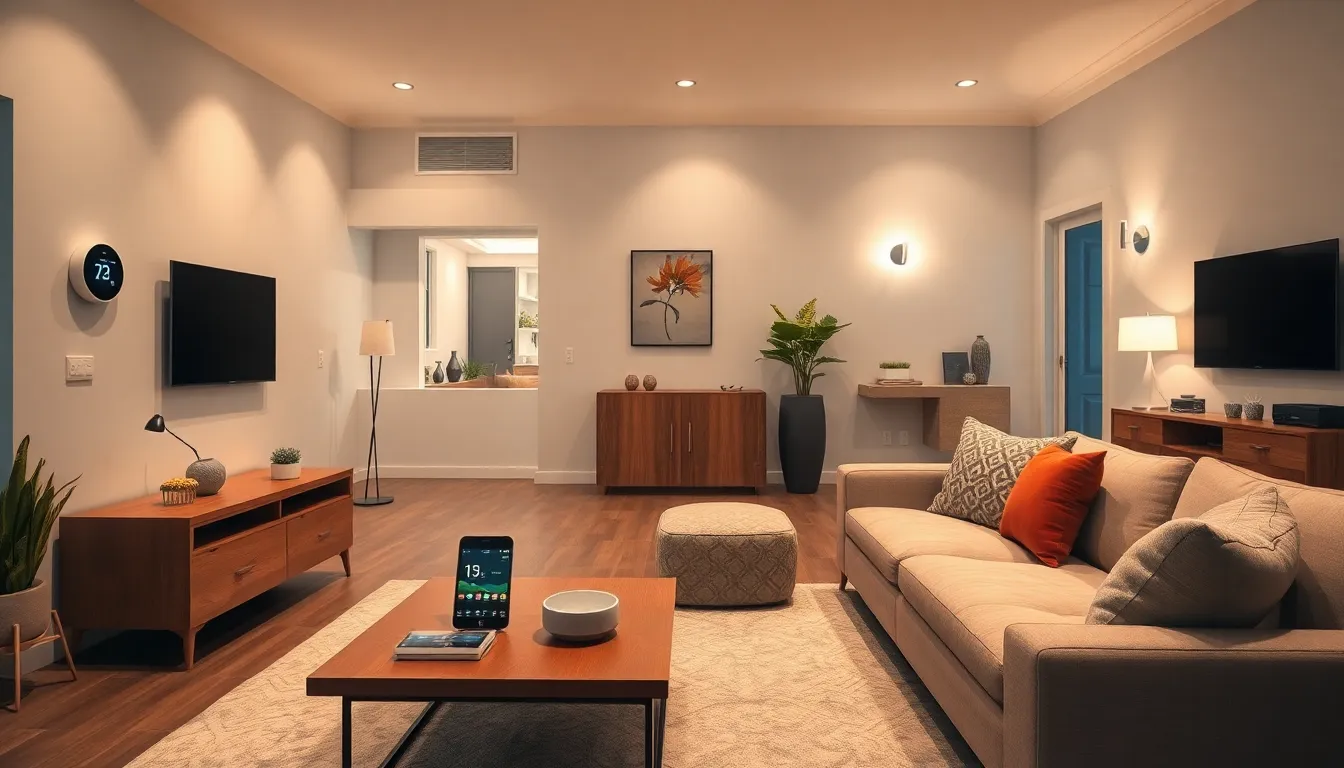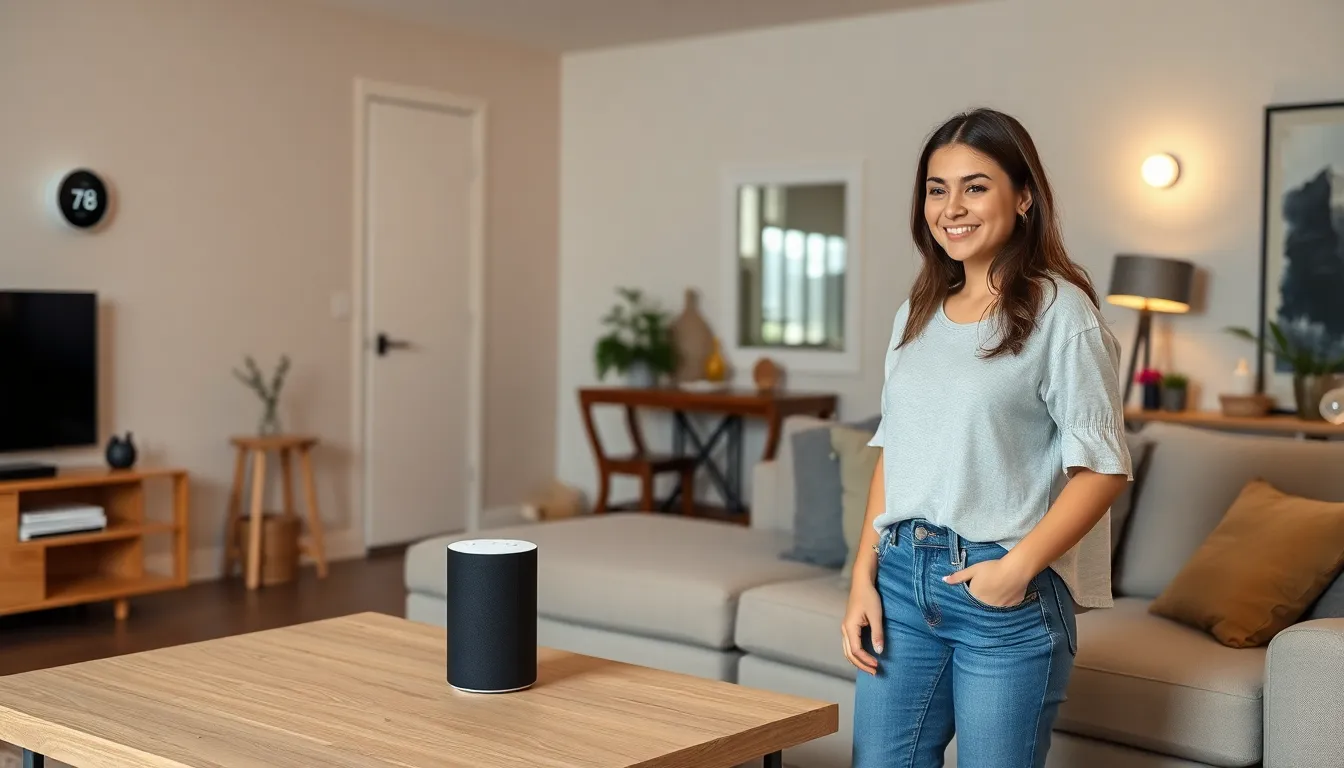Table of Contents
ToggleImagine a world where your coffee brews itself as you roll out of bed and your lights know when to dim, all while you kick back on the couch in your favorite pajamas. Welcome to the realm of smart home electronics, where convenience meets a sprinkle of tech magic. These gadgets aren’t just for tech enthusiasts; they’re for anyone who wants to turn their home into a futuristic haven.
From voice-activated assistants that understand your every whim to smart thermostats that keep your home cozy without breaking the bank, the possibilities are endless. It’s time to embrace the gadgets that not only simplify life but also bring a touch of humor to daily routines. So, buckle up and prepare to explore how these innovative devices can transform your living space into an efficient, fun-filled sanctuary. After all, who wouldn’t want a home that practically runs itself?
Overview of Smart Home Electronics
Smart home electronics offer seamless integration of technology within living spaces, enhancing everyday life. Devices like smart speakers facilitate voice commands, allowing control over multiple gadgets simultaneously. Security systems, featuring smart cameras and sensors, grant peace of mind through remote monitoring.
Thermostats designed for efficiency adjust temperatures automatically based on occupancy patterns, promoting energy savings. Smart lights enable customization of brightness and color, creating the desired ambiance at any time. Home entertainment systems enhance viewing experiences with easy streaming and voice control.
Incorporating smart appliances simplifies everyday tasks. Refrigerators can track inventory and suggest recipes based on available ingredients. Washers can be programmed remotely, optimizing laundry handling.
Compatibility plays a crucial role in smart home ecosystems. The ability of devices to communicate with each other ensures a unified experience. Platforms such as Samsung SmartThings and Google Home support a wide array of products, ensuring they work together effectively.
Constant updates from manufacturers improve features and security, making devices increasingly user-friendly. As technology evolves, more residents adopt these electronics, transforming their homes into efficient, responsive environments.
Overall, smart home electronics not only increase convenience but also contribute to energy efficiency and enhanced security. Embracing these advancements allows individuals to enjoy a modern, connected lifestyle.
Benefits of Smart Home Electronics

Smart home electronics offer a range of advantages that enhance daily living. These devices simplify routines and provide multiple benefits, creating a seamless and efficient home environment.
Convenience and Automation
Smart home devices automate everyday tasks. Voice-activated assistants allow individuals to control appliances hands-free. Smart thermostats adjust heating and cooling based on occupancy, saving energy and costs. Customizable lighting systems enable users to create specific atmospheres for different activities. Scheduling options for appliances ensure meals are prepared on time without manual effort. Additionally, remote access through smartphones grants users control from virtually anywhere. This increased convenience dramatically enhances lifestyle quality by saving time and effort.
Security Enhancements
Smart home electronics significantly improve home security. Security cameras provide real-time monitoring and alerts, keeping homeowners informed of any unusual activity. Smart locks enable keyless entry, offering convenience without compromising safety. Motion detectors trigger alerts and can activate lights to deter intruders. Integration with smartphone apps allows instant notifications if security breaches occur. Furthermore, automated routines create the illusion of occupancy, further deterring potential threats. These features create a safer home atmosphere that fosters peace of mind.
Popular Types of Smart Home Electronics
Smart home electronics encompass various devices that elevate convenience and security in daily life. They include advanced technology that integrates seamlessly into residential settings.
Smart Lighting Systems
Smart lighting systems provide customizable illumination options for homeowners. These systems include features such as app control, voice commands, and automated schedules. Users can set different moods with adjustable brightness and colors. Energy savings are achieved through LED technology that reduces electricity consumption. Additionally, many smart lighting options offer away modes, which simulate occupancy to deter potential intruders.
Smart Thermostats
Smart thermostats enhance energy efficiency by learning user behaviors. These devices monitor occupancy patterns, adjusting temperatures accordingly to save energy. A simple app interface allows for remote temperature adjustments from anywhere. Some models provide energy usage reports to help homeowners understand consumption trends. Integration with other smart home devices also creates an optimized energy ecosystem, making it simpler to maintain comfort in every season.
Smart Security Cameras
Smart security cameras improve home safety with real-time monitoring capabilities. High-definition video and night vision allow for clear footage in various lighting conditions. Users receive instant alerts on smartphone devices when motion is detected. Many cameras support two-way audio communication, enabling interaction with visitors. Advanced features include cloud storage options for easy video access and AI detection that identifies specific motion types, enhancing security measures.
Integration and Compatibility
Integration and compatibility play vital roles in the functionality of smart home electronics. Ensuring devices work harmoniously enhances overall convenience and user experience.
Platforms and Protocols
Platforms like Samsung SmartThings and Google Home provide essential ecosystems for smart devices. Each platform offers compatibility with a range of electronics, creating a centralized control hub. Protocols such as Zigbee and Z-Wave enable devices to communicate effectively, regardless of brand. It’s crucial to select devices that support the same protocol to ensure seamless integration. Comprehensive compatibility leads to improved functionality and simplifies user interactions.
Device Interconnectivity
Device interconnectivity facilitates a smooth experience across multiple smart home products. Sensors, cameras, and speakers sync together, allowing for automated routines tailored to user preferences. For instance, a motion detector might trigger smart lighting when someone enters a room. Regular firmware updates enhance interconnectivity features, ensuring devices remain compatible as technology evolves. Prioritizing products that promote interconnectivity results in a cohesive smart home environment that adapts to user needs.
Smart home electronics are revolutionizing how individuals interact with their living spaces. By embracing these innovative devices, homeowners can simplify daily tasks and enhance their overall quality of life. The integration of various gadgets creates a seamless experience that not only boosts convenience but also improves energy efficiency and security.
As technology continues to evolve, staying updated on the latest advancements ensures that users maximize their smart home potential. With platforms like Samsung SmartThings and Google Home leading the way, the future of home automation looks promising. Adopting smart home electronics allows individuals to enjoy a modern lifestyle that adapts to their needs, making everyday living more enjoyable and efficient.







